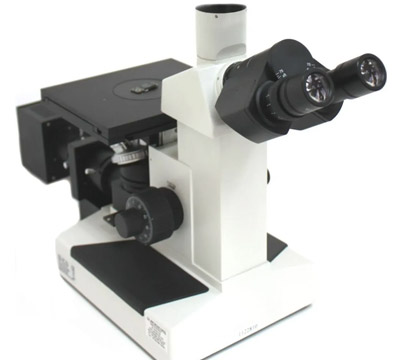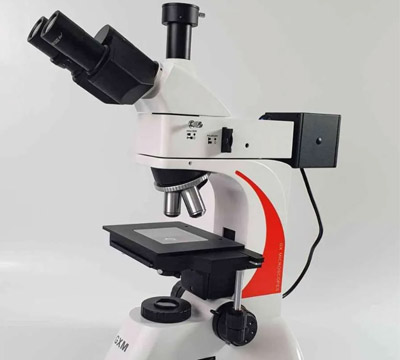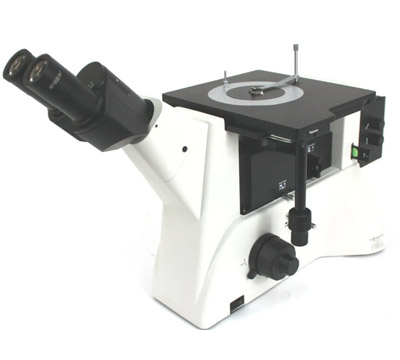Metallographic Microscopes
The main objective of Microscopic Examination is to unveil intricacies of metal structures that remain imperceptible to the naked eye. Metallurgical microscopes play a crucial role in determining grain size, identifying inclusions, assessing prior heat treatments, investigating potential causes of failures, analysing deformation, and detecting inter-granular corrosion. In essence, Microscopic Examination can unveil significant insights into the historical background of a metal specimen and predict its behaviour in practical applications.
Metallurgical microscopes, also referred to as materials microscopes, come equipped with an incident light source (reflected light) that directs illumination through the objective onto the reflective surface of the metal. The specimen must be impeccably flat and typically undergoes polishing. A 'micro' specimen is generally prepared using equipment available in our Materialographic Division, encompassing metals, composites, ceramics, or polymer samples. Additionally, this type of microscope is occasionally employed for examining particles trapped on filters. For more information about Metallurgical Microscopes, click here.
Our assortment of microscopy cameras offers advanced functionality at competitive prices, specifically tailored for microscopy applications. These cameras can be connected to your computer via USB or directly to a display monitor, with many featuring on-board SD card slots for computer-free image capture.
We also provide a comprehensive range of software options, ranging from basic image capture (usually included free with the camera) to sophisticated automated image analysis for tasks such as particle sizing and metallurgical analysis (e.g., grain size, inclusion counts, porosity, etc.).
Maintaining cleanliness is paramount in all aspects of microscopy, particularly concerning optical components. Lenses must be kept free from fingerprints, dust, and oil films. High-quality lenses are often coated with an extremely thin film to minimise light loss from reflection, and care should be taken to prevent acids from fingerprints, which can etch through the film and compromise the lens. After using an oil immersion lens, any residual oil should be promptly removed, avoiding drying on the lens.





